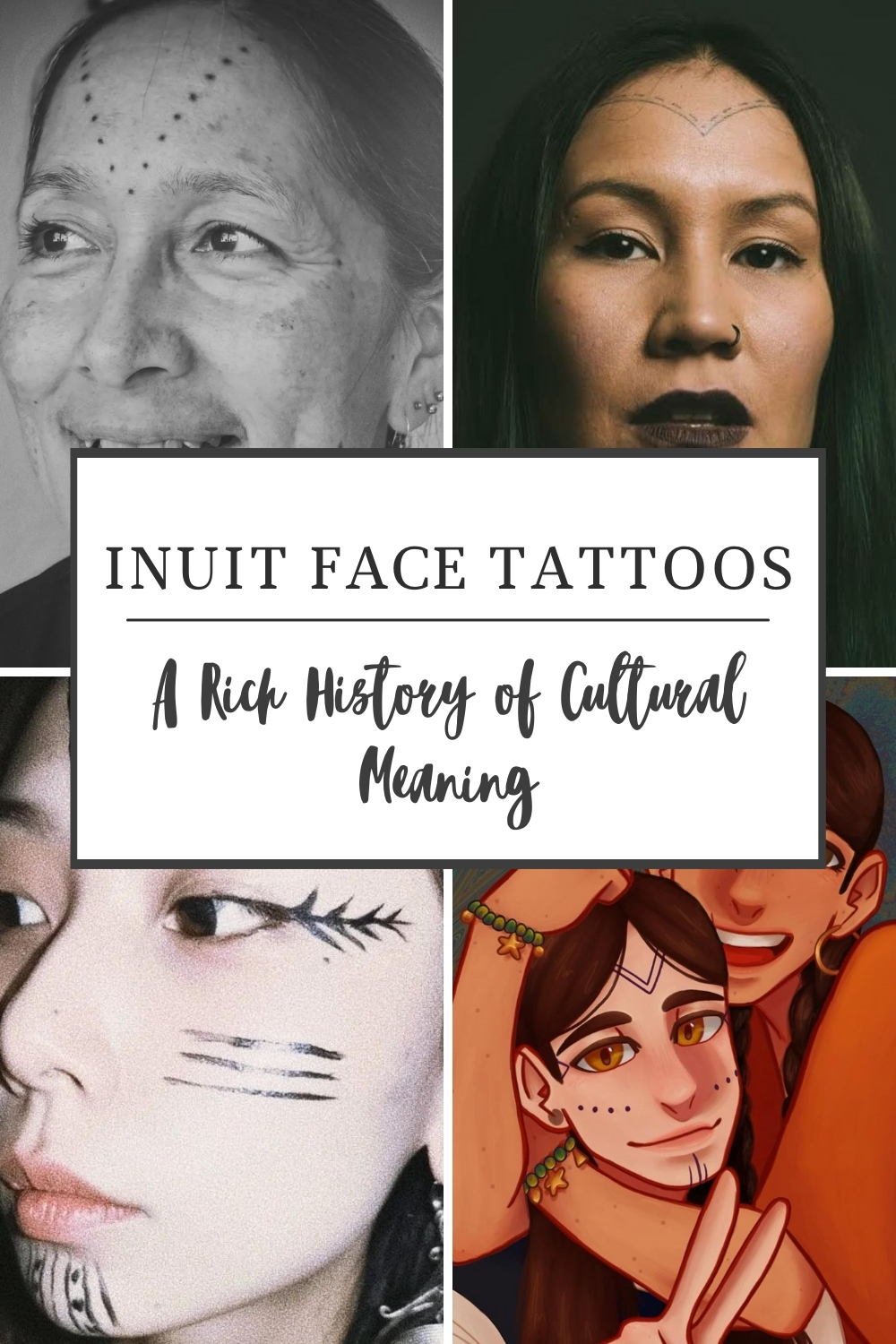What Do Inuit Face Tattoos Mean?
Face tattoos are common among indigenous peoples throughout the world. Inupiat and Yup’ik women have been using the Inuit tattoo for millennia in Alaska. This technique is considered to have originated in the Arctic.
Colonization suppressed traditional tattooing, but a new generation of Indigenous women is revitalizing the practice. You might be wondering then, what do Inuit face tattoos mean?
The Inuit tattoos signify different events in a woman’s life. And for different occasions, there are different patterns of Inuit tattoos. The technique is nearly exclusively carried out by women, who solely tattoo other women for a variety of reasons.

Read on to know more about the meaning behind the Inuit face tattoos, the meaning of their shapes, the process of getting an Inuit tattoo, and many more things.
The Story Behind Inuit Face Tattoos
Authentic Inuit tattoos serves as markers of cultural membership; as such, they are not meant to be copied or appropriated by people who are not members of the Inuit culture. Traditional Inuit tattoos in the Circumpolar North were created by women artists specifically for Inuit women.
Traditionally, the Inuit performed this ritual for religious and spiritual reasons so that they could gain entrance to the hereafter and for aesthetic reasons as well.
Moreover, getting tattoos was a ceremonial rite of passage that commemorated major milestones in a woman’s life. These events included the journey from girlhood to womanhood and the birth of a child.
Christian missionaries came to Alaska in the 19th and 20th centuries, and they banned important aspects of Native Alaskan culture like language, dancing, and body art.
In recent years, a trend has emerged in indigenous communities from Alaska to Nunavut, advocating for the revival of traditional tattooing.
As a means of reclaiming the practice after being suppressed for much of the 20th century, many modern tattoo enthusiasts have come up with their own symbolic interpretations of traditional Inuit tattoos.
The Shape of Tattoos and Their Meaning
The designs would be different from one place to the next. A wide range of symbolic meanings and practical functions are attributed to each pattern. Some are given to mark a special occasion or anniversary.
For example, the Y-shaped designs reflect the key equipment needed in the seal hunt, the V-shaped designs on the forehead signify the transition into womanhood, and the striped designs on the chin symbolize the onset of menstruation.
| Shape | Meaning |
| Y-shape | Tools for hunting |
| V-shape | Transition to womanhood |
| Stripes | Symbolize the onset of menstruation. |
Names of Different Inuit Face Tattoos
Inuit face tattoos also has names depending on the placement on the face. Let’s see in the box below:
| Tattoo name | Position |
| Tavluġun | Chin |
| Iri | Corner of the eye |
| Siqñiq | Forehead |
How to Take An Inuit Face Tattoo
Traditionally, Inuit tattoos were done using one of two techniques:
- Skin stitching, in which ink is threaded beneath the skin with a needle.
- Hand poking, in which a needle soaked in ink is pushed at an angle into the skin, spreading the ink to form lines and patterns.
Most tattoo artists were mature women with backgrounds in needlework. The traditional method involved using a thread made of Cariboo sinew that had been steeped in a solution of qulliq lampblack with seal suet.
Once the thread was ready, a bone, wooden, or steel needle would be used to insert it under the skin. Pokers and knives were also common, and they, along with other equipment, would be stored in a sack made of seal intestines. After the inking was finished, the area would be sanitized with a urine and soot mixture.
These days, most tattoos are applied with the help of a machine that uses needles and ink to create the desired effect. Both the old poking approach and the gun technique are in use today, with the former being used by individuals who value continuity with the past.
FAQs
Why do indigenous people get tattoos?
Each culture’s tattoos have a unique history, but most of them celebrate family ties, social standing, and a spiritual bond. Having one marked the beginning of a new phase in a woman’s life, just like having her first period does.
Can anyone get an Inuit tattoo?
No. Since traditional Inuit tattoos are signs of membership in a particular group, they should not be copied or used by individuals from other cultures. Throughout the Circumpolar North, Inuit tattoos have traditionally been designed and created by women.
Wrapping Up
Thank you for making it this far. We hope this article has helped you to get the basic information about Inuit face tattoos.
Inuit face tattoos bear significant meaning due to their cultural importance. Although in the past, this practice has been banned and it has been revived in recent times. Now, these tattoos signify a silent protest against the colonial past.
